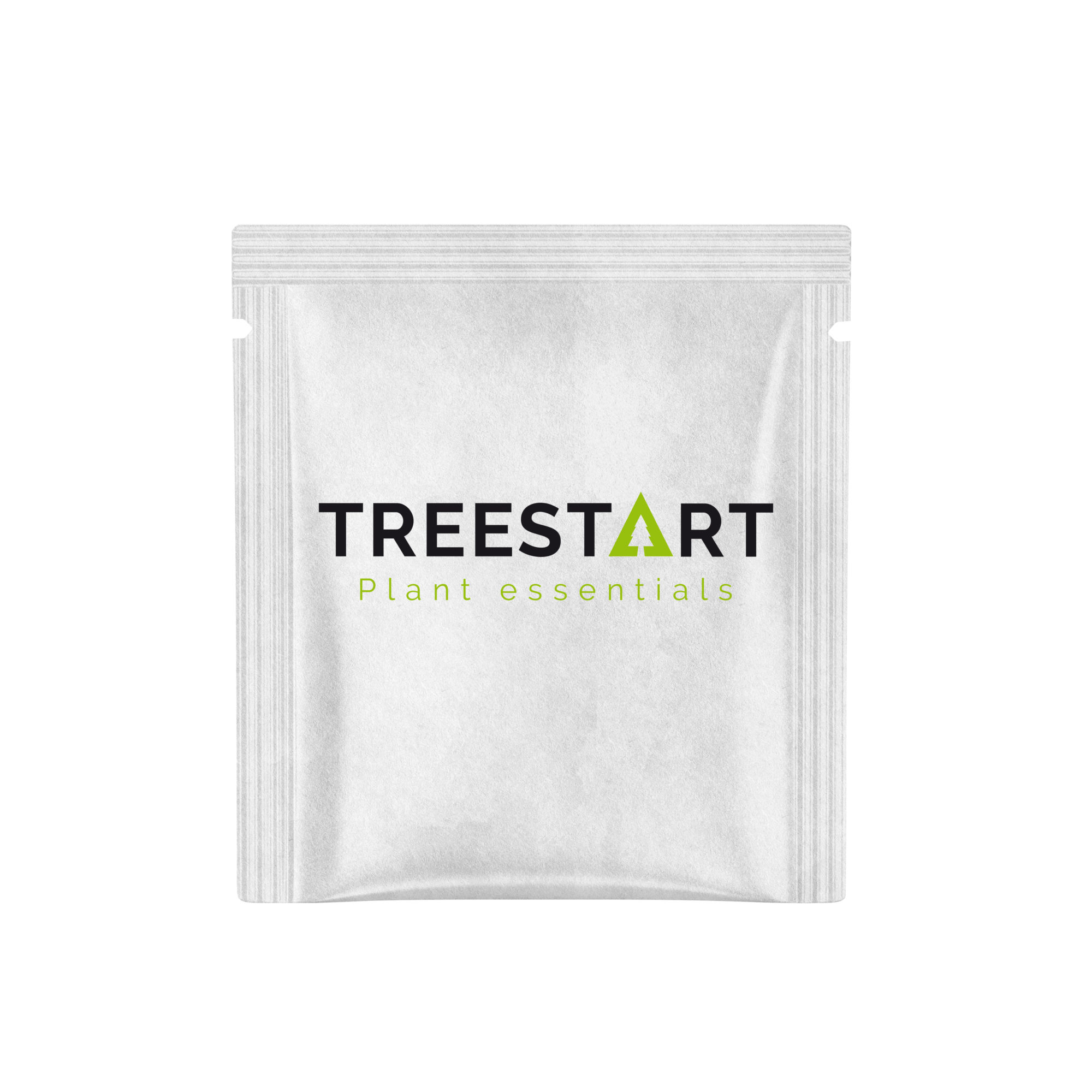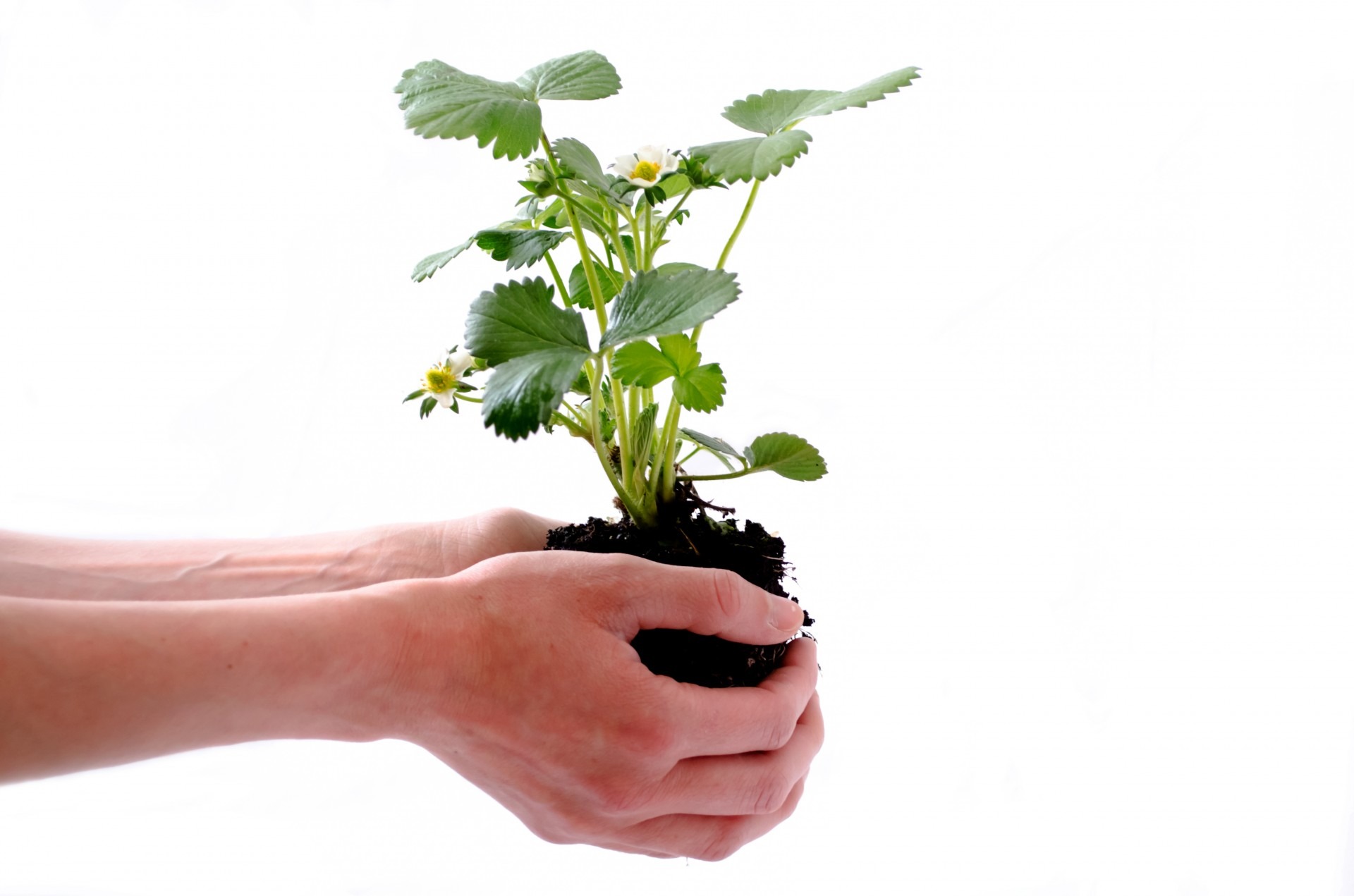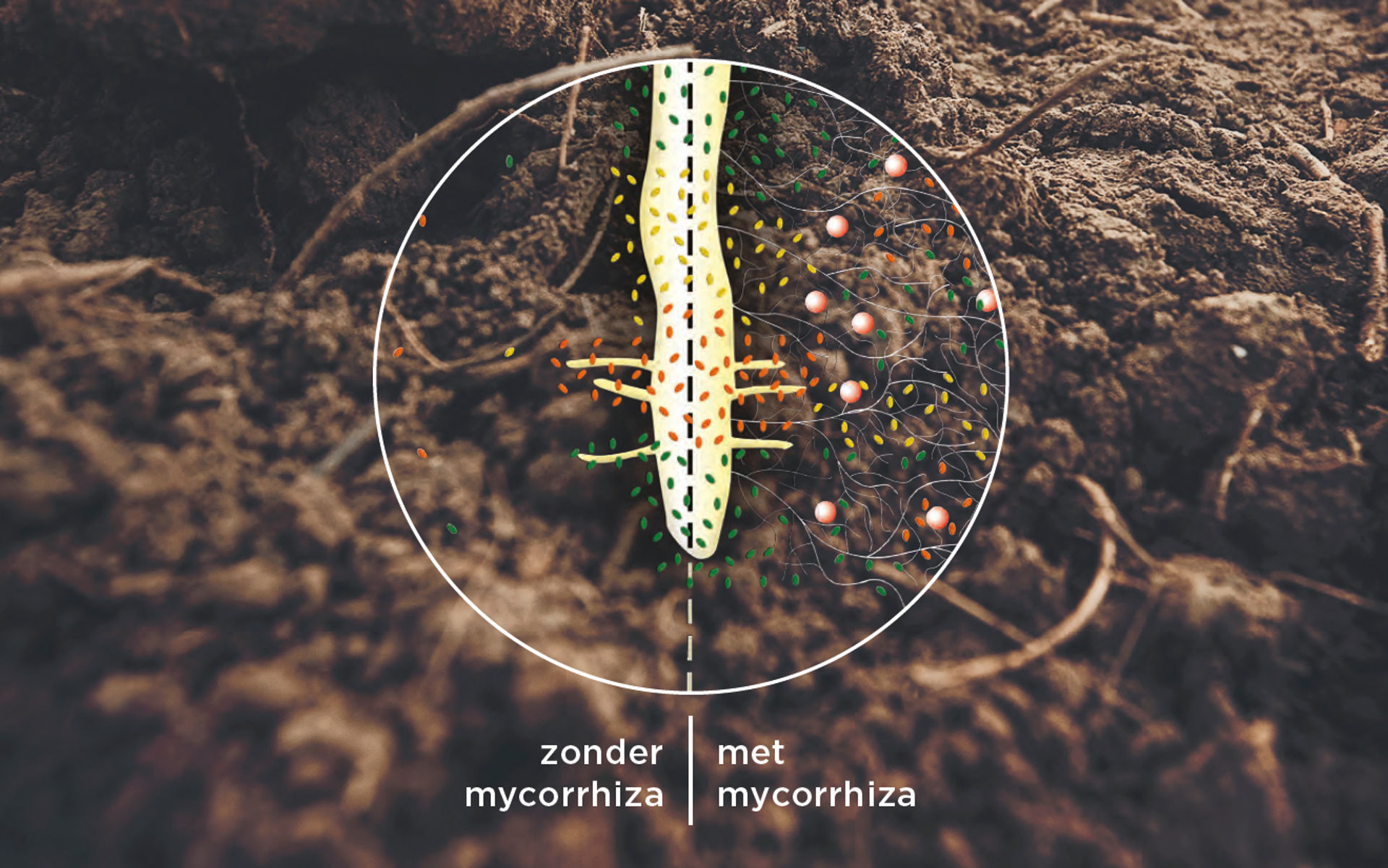

In exchange for plant sugars from the roots, they make minerals absorbable by plants, so that plants stay healthier and make better use of the nutrients. Without beneficial mycorrhizas and specific bacteria around their roots, plants are vulnerable. This manifests itself in a weaker crop with little resistance to diseases and pests.
The word mycorrhiza is derived from the Greek mukès (fungus) and rhiza (root). The roots of most plants are able to enter into a symbiosis with mycorrhiza. It is the most common form of cooperation among plants and is essential for the survival of many species.
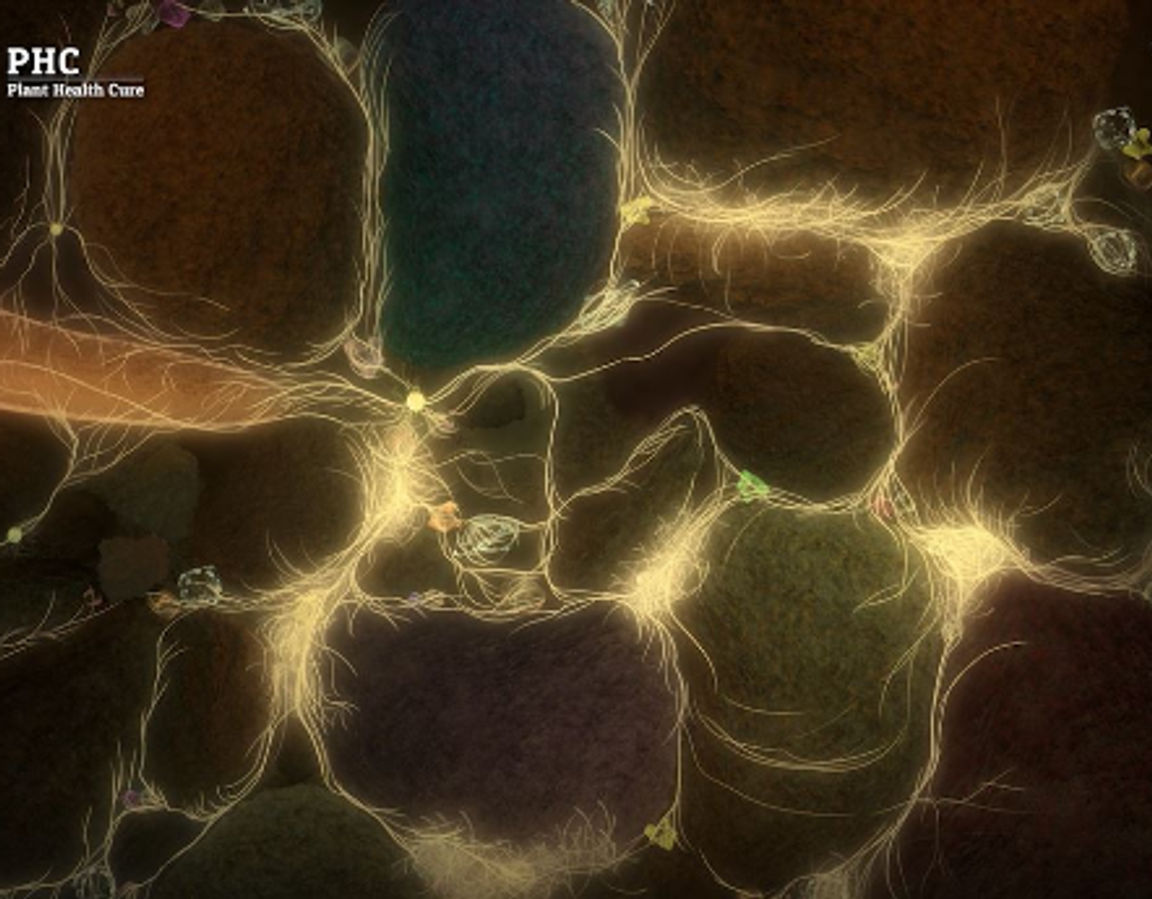
Why mycorrhiza?
Why mycorrhiza?
Healthy soil is essential for the development of strong, healthy plants. Such a soil makes plants less susceptible to diseases, pests and stress and allows them to perform optimally. Two factors are crucial to achieve healthy soil: mycorrhizas and beneficial root bacteria. We have all learned that roots absorb water and minerals through osmosis pressure (with salts) and ion exchange. That is only partly true. Only young shoot roots can do this for about three weeks. If colonization with mycorrhiza is not established during this time, the uptake roots will die. This forces plants to continually produce new roots.
Image 1: Mycorrhiza in the micropores.
Due to the exuberant growth and small diameter of the fungal threads or hyphae (approx. 3μm), mycorrhizal fungi can exploit a large soil volume. They can release minerals and transport them via the fungal threads to the plant roots. In nature, 95% of all plants live together with mycorrhizas. The absorption capacity of the roots increases on average by up to 700%, making plants absorb water and nutrients more easily and efficiently. Mycorrhizal fungi have been proven to contribute to plant resistance to pathogens in the soil, drought and heavy metals. In addition, these beneficial fungi occupy the space around the roots, leaving soil-borne diseases with less room to grow.
Soil is a living organism
The animated film 'Soil is a living organism' explains PHC's vision on soil biology. This 12-minute film shows everything about how plants grow underground, and how mycorrhizas, bacteria, and soil life form an inseparable system. Soil must be viewed as a living organism. The best crop protection comes from the plant's own resilience, which is why healthy soil biology is essential for healthy crops. Mycorrhiza plays an essential role in this.
Typen mycorrhiza
Endomycorrhiza or Arbuscular mycorrhiza
They occur all over the world and are important for agriculture and horticulture. Endomycorrhiza grows with fungal threads (hyphae) into the root cells where they form exchange organs in the shape of a tree. (arbuscules) They also make storage blisters (vesicles) in the roots for more difficult times. Endomycorrhizas produce spores (seeds) at the ends of the hyphae underground. They reproduce via spores and via root contact of hyphae with all kinds of other types of plants. They are hardly selective in the choice of their host plant. There are approximately 140 species of endomycorrhiza worldwide and remain loyal to their host plant as long as it survives
Ectomycorrhiza
These species actually only occur in a limited number of tree species. The fungal threads grow around the outside of the plant root. Ecto means “outside”. There are approximately 6,500 species of ectomycorrhiza worldwide, of which more than 3,000 occur in Europe. They form mushrooms with spores. The spread of these spores is via the wind, people and animals. Unlike endomycorrhizas, ectomycorrhizas are not faithful to their host tree. Several species can grow on one carrot. There is a coming and going of ectomycorrhizal species. They all want to survive and with a few thousand species they only have a small number of tree species to choose from.
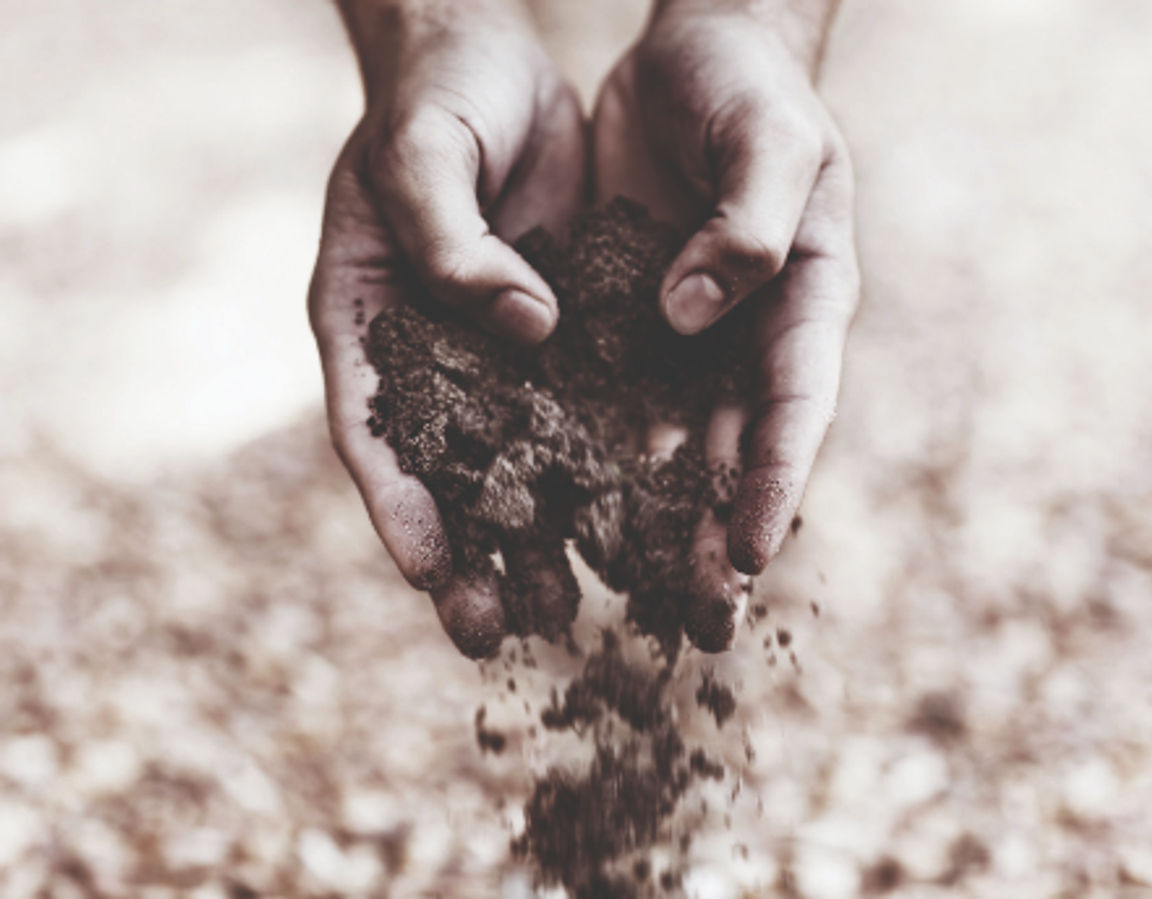
Millions of years old
Millions of years old
The oldest mycorrhizal finds are 400 million years old and were found in plant fossils (T.N Taylor Mycologia 87/4 1995). The first land plants already entered into symbiosis with mycorrhiza. This was necessary for their survival and to simultaneously improve the soil around their roots. In this way they facilitated their own growing conditions. The fungi were adapted for finding water and minerals. Just like plants, root fungi have developed into multiple species and forms.
Questions about this article? Contact us!
Contact
- Nederlands
- English
- Deutsch
- Francais
